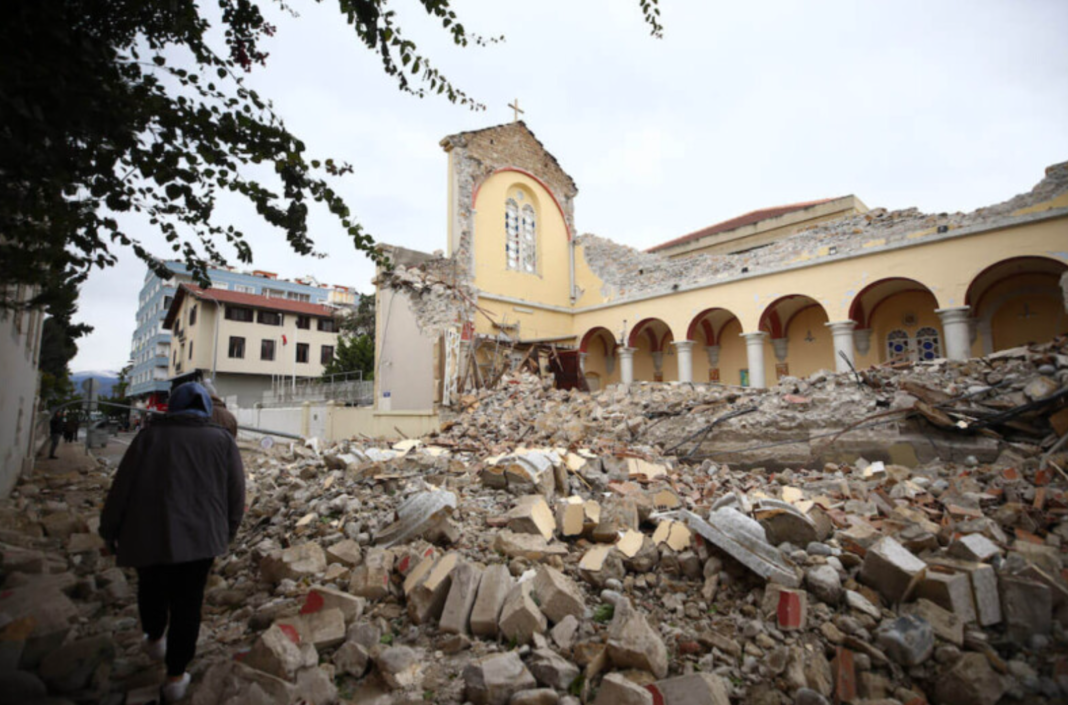« Turkish authorities have pledged to provide support and resources to ensure that the damaged cultural sites are fully restored and preserved for future generations » reports Ecem Elif Sağlık in Politics Today on February 23, 2023.
The two earthquakes with a magnitude of 7.7 and 7.6 that struck eleven provinces in Turkey (Adana, Adıyaman, Diyarbakır, Gaziantep, Hatay, Kahramanmaraş, Kilis, Malatya, Osmaniye ve Şanlıurfa) on February 6 caused major devastation to local cultural heritage sites as many historical monuments were either severely damaged or completely destroyed.
The Turkish Ministry of Culture and Tourism has promptly taken action to assess the damage to the cultural treasures in the eleven provinces affected by the earthquake. Minister of Culture and Tourism Mehmet Nuri Ersoy stated that teams continue to work to assess the damage to all cultural properties and ensure their safety in the regions where the “disaster of the century” was experienced.
Ersoy also emphasized that in addition to the teams formed by engineers, architects, and lecturers from universities who are experts in antiquities, academic support will be provided by universities for damage assessment.
“Every part of the buildings will be taken under protection, and restorations will be carried out quickly in accordance with the original,” Ersoy continued.
The earthquakes affecting eleven provinces caused minor damage to many historical structures, especially the Habib-i Neccar Mosque, which has been standing for centuries in Antakya; Adıyaman Grand Mosque (Ulu Cami); and St. Nicholas Greek Orthodox Church in Antakya.
The symbol of Gaziantep
Among the sites affected by the earthquake was Gaziantep Castle, which was built in the 11th century and is located on a 25-30 meter hill in Gaziantep city center. The castle was added to the UNESCO World Heritage List in 2003, and served as a prison during the time of the Ottoman Empire. Built by Sultan Orhan Gazi in 1396, it is considered one of the largest and most exquisite castles in Turkey.
While some of the bastions in the east, south, and southeast parts of Gaziantep Castle were destroyed by the earthquake, debris was scattered on the road.
Şirvani Mosque, located near the historical Gaziantep Castle, is another historical structure damaged by the earthquake. The mosque, built in 677 CE, was one of the most important historical buildings in Gaziantep. The mosque’s dome and the wall on the eastern façade were destroyed.
It has been reported that many artifacts in Gaziantep museums, including those in the renowned Zeugma Mosaic Museum, have been left unscathed.
World’s first cathedral in Hatay
In the nearby Hatay Province, the world’s first cave church, St. Pierre, and the thousands-year-old Hatay Castle ruins were not damaged by the earthquake. Antakya is inhabited by several minority communities, including Syriac Orthodox Christians, Syriac Catholics, and Armenians.
However, the Habib-i Neccar Mosque, which was the first mosque in Anatolia, and the Greek Orthodox Church of Antioch, which has been around since the first century CE, suffered extensive damage and almost collapsed.
The centuries-old Habib-i Neccar Mosque was built in 638 CE when Antakya was under the rule of Muslim Arabs, and was among the most important historical structures of the city.
The Hatay State Assembly Building, built by the French architect Leon Benju as a movie theater in 1927 and now serving as a cultural center, was also destroyed in the earthquake.
Massive damage at earthquake’s epicenter
Kahramanmaras, the epicenter of both earthquakes, suffered extensive destruction. The Grand Mosque (Ulu Cami), built in Kahramanmaraş during the Dulkadiroğlu Principality, lost half of its minaret, coupled with damage caused by falling rubble near the entrance of the mosque.
The Diyarbakır Fortress, which was registered on the UNESCO World Heritage List in 2015, managed to survive the earthquake. It was reported that there was no serious damage to the walls, but there was debris in some parts.
Turkish authorities have pledged to provide support and resources to ensure that the damaged cultural sites are fully restored and preserved for future generations.

